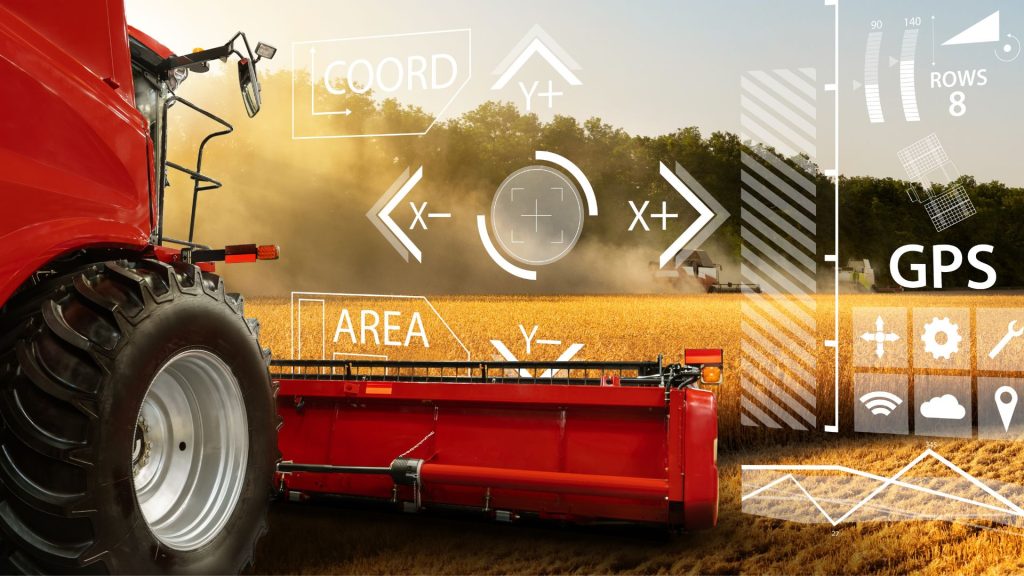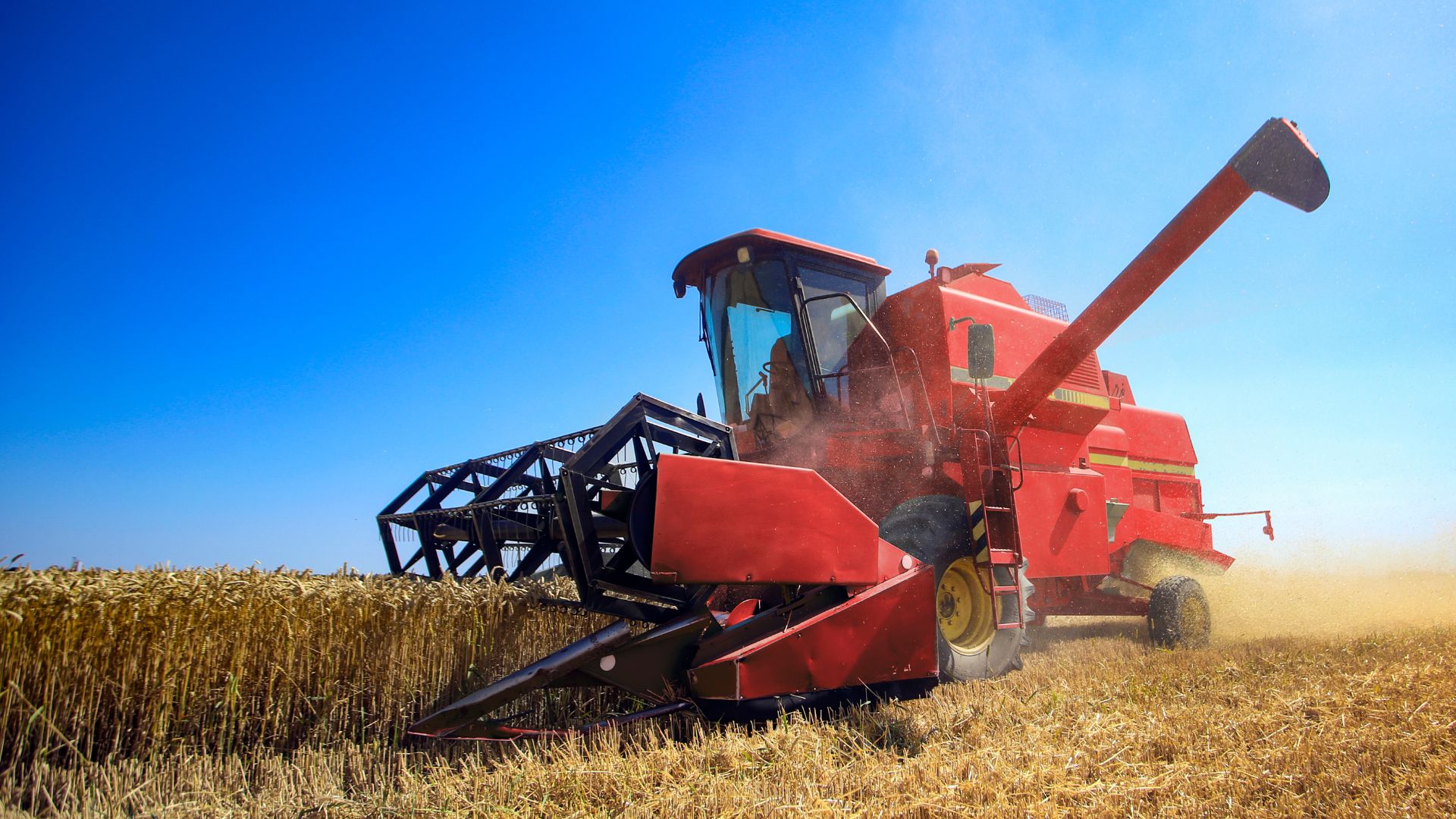Boosting Agriculture Production through Mechanization: A game changer for farmers
Co-author: Dr. Mubashar Nadeem, Ph.D. Agronomy (the University of Agriculture Faisalabad), Currently working as an Assistant Professor in Agronomy, at Ghazi University.
The benefits of mechanization in agriculture – How mechanization can increase crop productivity
Mechanization has revolutionized farming methods and enabled farmers to perform tasks more efficiently and effectively. Using machinery such as tractors, combines, and harvesters reduced the need for manual labor and increased the speed of tasks. This has resulted in higher yields and reduced farmers’ costs. Below we will discuss how mechanization can aid in precision farming, allowing farmers to monitor and adjust inputs based on specific needs, resulting in optimal crop growth. However, the article cautions that more than mechanization is needed to boost agricultural production. A combination of good agronomic practices, appropriate machinery, and skilled labor is required for successful implementation.
The Benefits of Mechanization in Agriculture
Mechanization has a lot of benefits in Agriculture, and some of them are as follows:
- Increased Efficiency: Mechanization has enabled farmers to work more efficiently and faster than they could using traditional methods. This has led to saving time and energy, which can be redirected towards other productive activities. For instance, with mechanized farming, it is possible to plow more land in less time, plant more seeds, and harvest more crops.
- Improved Quality of Work: Mechanization has also improved the quality of work in agriculture. By using machines, farmers can ensure that their fields are evenly plowed, seeds are planted at the proper depth, and crops are harvested at the right time. This improves not only the yield but also the quality of the produce.
- Improved Crop Management: Mechanization also allows farmers to manage their crops more effectively. By using machines, farmers can apply fertilizers, herbicides, and pesticides more precisely, which reduces wastage and improves crop health.
- Reduced Labor Costs: Mechanization minimizes the need for manual labor, which can be expensive and time-consuming. By using machines, farmers can reduce the amount of time and money spent on hiring and training workers, as well as reduce the risk of injuries and accidents.
- Increased Productivity: Mechanization has been shown to increase productivity in agriculture by up to 40%. This is because machines are faster, more accurate, and can work for longer periods than humans. This leads to increased yields and profitability for farmers.
- Better Conservation of Resources: Mechanization has also led to better conservation of natural resources such as water and soil. By using precision irrigation and cultivation techniques, farmers can reduce water usage and soil erosion, improving the sustainability of their farming practices.
- Increased Access to Markets: Finally, mechanization has enabled farmers to reach broader markets by increasing their production capacity and improving the quality of their produce. This has helped farmers to increase their incomes and improve their standard of living.

How mechanization has revolutionized farming methods
Automation has brought about a profound transformation in farming methods, ushering in a new era of efficiency and productivity. This has been achieved through cutting-edge tools and machinery that have replaced traditional manual labor, resulting in higher yields, lower labor costs, and more sustainable agricultural practices.
With the advent of tractors, plows, and other farm equipment, farmers can perform tasks such as tilling, planting, and harvesting on a large scale. This has led to a significant increase in productivity, enabling farmers to produce more crops with less effort and time.
Mechanization made farming more attractive to younger generations who may not have been interested in the physically demanding work of traditional farming methods.
Mechanization has also led to more sustainable agricultural practices. Farmers can reduce their reliance on harmful chemicals and other inputs with modern equipment and technology, resulting in healthier soils, cleaner water, and reduced environmental impact. As such, mechanization has played a critical role in meeting the world’s growing demand for food and ensuring the viability of agriculture for future generations.
How mechanization can aid in precision farming
Precision farming is a modern approach to agriculture that leverages technology and data analysis to optimize crop yields and minimize waste. Farmers can gather detailed information about soil conditions, crop growth, and weather patterns using advanced sensors, GPS technology, and automated machinery. This data can be used to create detailed farm maps, which can then be used to create customized plans for planting, fertilizing, and harvesting crops.
One of the key ways that mechanization can aid in precision farming is by providing farmers with more accurate and efficient tools for collecting data. For example, GPS-equipped tractors can be used to create detailed maps of soil conditions and crop growth, which can be used to identify areas that require additional fertilization or irrigation. Similarly, drones can be used to collect high-resolution images of crops, which can be used to monitor plant health and detect early signs of disease or pest infestation.
Another way that mechanization can aid in precision farming is by providing farmers with more precise and efficient tools for planting and harvesting crops. For example, automated planting systems can be programmed to adjust the depth and spacing of seeds based on soil conditions and crop type, which can help to ensure that each seed is planted at the optimal depth and distance from its neighbors. Similarly, automated harvesting systems can be programmed to identify and selectively harvest only the ripest crops, which can help to minimize waste and increase yields.
Recent and advanced Tools of Mechanization used in Agriculture to increase productivity
- Autonomous cultivators: Autonomous cultivators are self-driving machines used to weed and till fields. They are equipped with sensors and cameras that allow them to navigate in fields and perform tasks with precision. The cultivator’s operation is controlled by a computer, which can be programmed to perform specific tasks at specific times.
- Robotic harvesters: Robotic harvesters are machines that harvest crops such as strawberries and tomatoes. They are equipped with sensors that allow them to detect ripe fruit and cut it from the plant. The harvested fruit is then transported to a storage bin.
- Smart irrigation systems: Smart irrigation systems are used to provide water to crops. They are equipped with sensors that measure soil moisture and weather conditions. The system is controlled by a computer, which can adjust irrigation based on the measured soil moisture and weather conditions.
- Precision nutrient application systems: Precision nutrient application systems are used to apply fertilizers to crops. They are equipped with sensors that measure soil nutrient levels and can adjust fertilizer application rates accordingly.
- Soil compaction sensors: Soil compaction sensors are used to measure soil compaction levels. They are mounted on agricultural equipment such as tractors and tillers and can provide real-time feedback on soil compaction levels. This information can be used to optimize field management practices such as tillage and planting.
- Crop robots: Crop robots are autonomous machines that are used to plant, weed, and monitor crops. They are equipped with cameras, sensors, and GPS technology that allow them to navigate fields and perform tasks with precision.
- Variable rate seeding systems: These systems are used to plant seeds at varying rates across a field. They are equipped with sensors that measure soil properties and can adjust seed application rates accordingly.
- Automated grain dryers: Automated grain dryers are machines used to dry and store grain. They are equipped with sensors that measure grain moisture levels and can adjust drying temperatures and airflow rates accordingly.
- Intelligent pest management systems: Intelligent pest management systems are used to monitor and control pest populations. They are equipped with sensors that can detect pest activity and can apply targeted pest control measures such as pheromone traps or pesticide sprays.
- Autonomous weeders: Autonomous weeders are self-driving machines that are used to remove weeds from fields. They are equipped with cameras and sensors, and their operation can be programmed.
These recent and new mechanized tools in agriculture have the potential to revolutionize the farming industry by increasing efficiency, reducing labor costs, and improving yields.
Why mechanization alone is not enough to boost Agriculture productivity
Mechanization alone is insufficient to boost agricultural production because agriculture is a complex process involving many variables. While using machinery can increase the efficiency of farming operations and reduce labor costs, it is not a panacea for all agricultural challenges.
Firstly, mechanization alone cannot address issues related to soil fertility and health, which are fundamental to agricultural productivity. Good agronomic practices such as crop rotation, intercropping, and using fertilizers, pesticides, and herbicides are essential to maintain soil fertility, prevent soil erosion, and control pests and diseases. These practices require knowledge and skills that go beyond the use of machinery and are critical for successful crop production.
Secondly, the appropriate machinery is required for successful mechanization. The use of unsuitable machinery can lead to poor performance, high maintenance costs, and low efficiency. Therefore, farmers should know the type of machinery required for specific tasks, its maintenance and repair, and the safe operation of machinery. The selection of machinery should be based on the specific needs and characteristics of the farm, such as soil type, crop type, farm size, and topography.
Lastly, skilled labor is an essential component of success. Skilled labor is essential to optimize the use of machinery and good agronomic practices and to achieve high yields and profitability. The use of machinery requires skilled labor to operate and maintain it and to ensure its proper use. The skills required are diverse, including crop management, animal husbandry, irrigation management, post-harvest handling, and marketing. So a combination of good agronomic practices, appropriate machinery, and skilled labor is required for successful agricultural implementation. Farmers should have access to proper machinery, knowledge of good agronomic practices, and a skilled workforce to maximize the benefits of mechanization and achieve high yields and profitability in agriculture.
In conclusion, mechanization has been a game-changer in the agricultural sector by enhancing productivity and efficiency. It contributes to efficient crop and animal management, reduced risks of losses due to weather or pests, and higher production. In addition, mechanization has made farming more attractive to younger generations, creating opportunities for sustainable agriculture and rural development. Despite the initial costs of acquiring and maintaining machinery, the benefits of mechanization outweigh the expenses in the long run. Therefore, policymakers and stakeholders must invest in mechanization and promote its adoption in agriculture to ensure food security, improve livelihoods, and contribute to economic growth.
Related articles:
How to choose the right tractor for your farm
Agricultural Machinery – Tractor Attachments for different Farming Operations
Boosting Agriculture Production through Mechanization: A game changer for farmers









































































